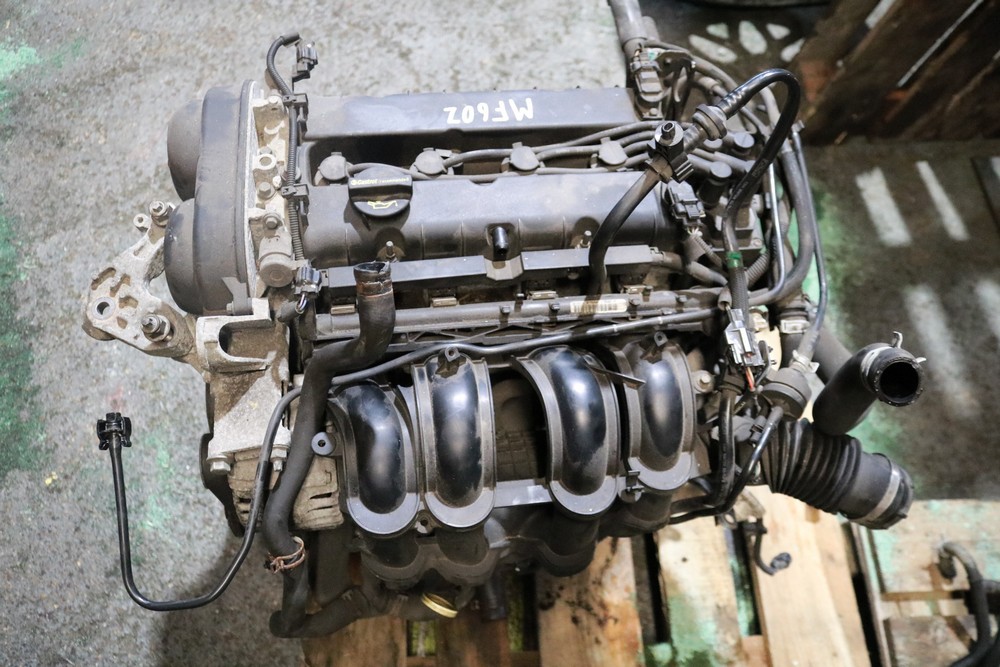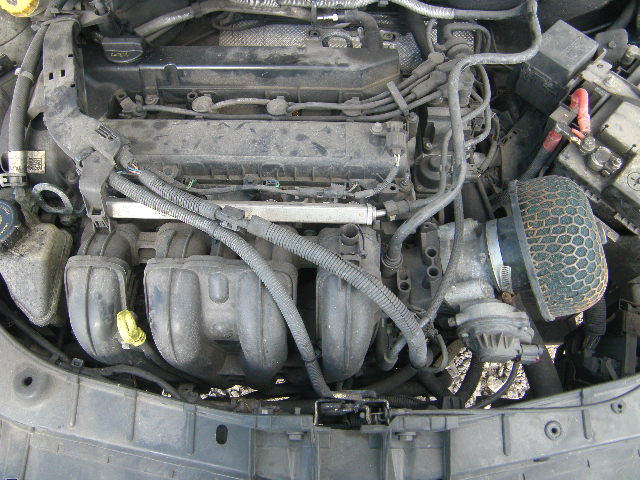How a Well-Maintained Ford Fiesta Engine Improves Vehicle Longevity
How a Well-Maintained Ford Fiesta Engine Improves Vehicle Longevity
Blog Article
Unlocking the Power of Engines: A Comprehensive Guide to Efficiency and Efficiency
Understanding the detailed technicians of engines is essential for both efficiency enthusiasts and day-to-day motorists. The solutions may redefine our approach to engine performance and performance in ways that are both enlightening and necessary.
Comprehending Engine Basics
What makes up the basic auto mechanics of an engine? At its core, an engine is a device designed to convert fuel right into mechanical energy via a collection of regulated surges or combustion procedures. The key components include the cyndrical tube, piston, crankshaft, camshaft, and shutoffs. The cylinder functions as the chamber where combustion takes place, while the piston moves within the cyndrical tube to transform the energy from burning into linear motion (ford fiesta engine).
The crankshaft after that changes this straight movement right into rotational power, which inevitably powers the automobile. The camshaft controls the opening and closing of the shutoffs, regulating the intake of air and fuel and the expulsion of exhaust gases. In addition, the engine relies upon a carefully calibrated fuel-air mix, ignition system, and cooling system to make sure optimum efficiency and effectiveness.
Understanding engine basics additionally includes identifying the importance of engine cycles, such as the four-stroke cycle, that includes consumption, power, exhaust, and compression strokes. Each phase is crucial in making sure the engine operates efficiently and successfully. Proficiency of these fundamental technicians prepares for exploring much more intricate engine dynamics and performance metrics, crucial for enhancing both power result and efficiency.
Secret Efficiency Metrics
Trick performance metrics are important for assessing an engine's performance and power outcome, offering beneficial understandings for both makers and customers. These metrics work as benchmarks for engine efficiency, allowing for educated choices in manufacturing, layout, and acquiring.
Among the key metrics is horsepower, which evaluates the engine's capacity to execute job over time. Torque, gauged in pound-feet, is an additional crucial metric that indicates the engine's rotational pressure, directly impacting velocity and lugging capability. Gas performance, usually determined in miles per gallon (MPG) or litres per 100 kilometers (L/100km), evaluates how efficiently the engine transforms fuel into activity, influencing ecological considerations and operational expenses.
In addition, thermal effectiveness steps exactly how well an engine transforms gas energy right into valuable job, revealing understandings into power losses largely through warmth. Discharge levels, consisting of carbon dioxide and NOx, are also vital, reflecting the engine's ecological influence and compliance with regulative criteria.

Tuning Strategies for Performance
Tuning methods play a significant duty in boosting engine effectiveness by maximizing efficiency metrics determined in earlier conversations (ford fiesta engine). Various approaches exist to make improvements an engine, each adding to enhanced fuel economic situation and lowered emissions
One efficient technique is readjusting the air-fuel ratio, guaranteeing the engine runs within the optimum combustion regimen. A leaner combination can improve gas effectiveness, yet it has to be stabilized to avoid misfires or engine knock. Additionally, reprogramming the engine administration system can recalibrate specifications such as ignition timing, which further improves performance while preserving power output.
One more vital technique entails changing the intake and exhaust systems. Upgrading to high-performance air filters and exhaust headers can decrease back stress, facilitating far better air movement. This enables the engine to breathe even more openly, click to read bring about boosted burning performance.
Moreover, the execution of innovative adjusting tools, like dyno screening, gives accurate information that allows targeted modifications. On a regular basis keeping an eye on these efficiency metrics makes certain that tuning initiatives generate the desired effectiveness outcomes. Collectively, these methods not just strengthen engine efficiency yet likewise add to long-lasting sustainability in engine operations.
Maintenance for Optimal Performance
Regular engine maintenance is important for attaining optimum efficiency and longevity. A properly maintained engine not just operates efficiently yet also lessens the danger of expensive repairs and failures. Trick parts calling for normal interest consist of oil, filters, belts, and ignition system.
Altering the engine oil at advised intervals is crucial, as oil lubricates relocating components and protects against overheating. Likewise, changing oil and air filters guarantees that contaminants do not hinder engine function. Neglecting these elements can bring about reduced efficiency and prospective engine damage.
In addition, evaluating and replacing used belts and hose pipes is crucial to stop sudden failures. Timing belts, specifically, need to be replaced according to the supplier's routine to prevent tragic engine damage.
Ignition system ought to also be examined and changed as needed, considering that they play an important duty in ignition and gas performance.
Future Trends in Engine Modern Technology
Embracing advancements in modern technology, the future of engine style is positioned to transform performance and effectiveness across various applications. One of the most considerable fads is the shift toward electrification. Hybrid and fully electrical powertrains are coming to be increasingly mainstream, offering reduced discharges and improved gas efficiency. This shift is not merely a requirement however a fad driven by regulative stress and customer need for sustainable services.
In addition, developments in products science are resulting in lighter, more powerful components that boost engine performance while minimizing power usage. Advanced production strategies, such as 3D printing, permit the creation of intricate geometries that go to this site improve air flow and thermal administration, hence optimizing combustion processes.
Furthermore, the assimilation of synthetic knowledge and equipment learning is readied to transform engine diagnostics and why not check here efficiency tuning. These innovations can evaluate huge quantities of information in actual time, enabling anticipating upkeep and customized efficiency improvements.
Final Thought
In conclusion, opening the power of engines calls for a detailed understanding of their mechanics and performance metrics. Executing effective tuning methods and sticking to regular maintenance practices significantly boost engine abilities.
In addition, the engine relies on a thoroughly calibrated fuel-air mix, ignition system, and cooling down system to make sure optimum efficiency and efficiency.
Comprehending engine essentials likewise involves recognizing the value of engine cycles, such as the four-stroke cycle, which consists of consumption, compression, exhaust, and power strokes. Proficiency of these basic auto mechanics lays the foundation for exploring more complex engine dynamics and performance metrics, vital for optimizing both power output and efficiency.

Welcoming improvements in technology, the future of engine style is poised to revolutionize performance and performance across different applications.
Report this page